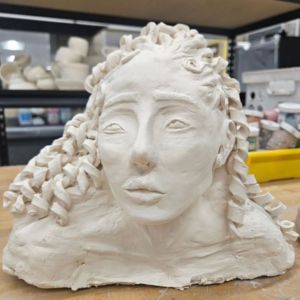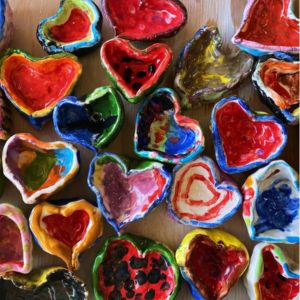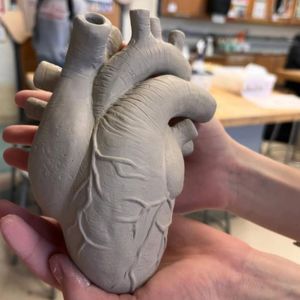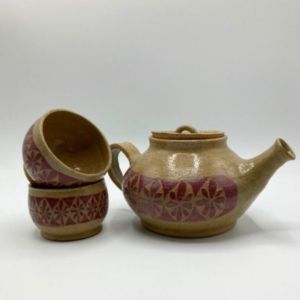Why Kids Need Clay
Clay isn’t just for art class—it’s a powerful educational tool that enhances creativity, problem-solving, and hands-on learning across multiple subjects. From fine motor development to STEAM integration, working with clay fosters essential skills that support academic success and personal growth.
The power of clay
Clay is a hands-on educational tool that fosters creativity, problem-solving, and cross-disciplinary learning. Incorporating clay into the classroom enhances cognitive, emotional, and physical development while improving fine motor skills and abstract thinking.
A strong ceramics program supports academic success and personal growth, making it an essential part of a well-rounded education.
Photo credit: Thomas Jefferson High School visual arts in Denver, Colorado.
The benefits of clay
Working with clay offers a rich, hands-on learning experience that engages the senses, encourages creativity, and builds essential skills across multiple disciplines.
- Tactile and malleable: Clay is calming and promotes focus, helping children center their attention while they explore its properties.
- 3D learning: Engaging with clay helps students develop spatial awareness and improve problem-solving skills—key elements in subjects like geometry and physics.
- Real-world applications: From chemistry to engineering, clay projects provide opportunities to explore scientific principles and material properties in a hands-on environment, making learning both fun and meaningful.
Photo credit: Clay Day LBC in Long Beach, California.
STEAM integration
Clay is a perfect cross-disciplinary medium, integrating seamlessly with Science, Technology, Engineering, Art, and Mathematics (STEAM) education. By connecting art with these key subjects, students gain a holistic understanding that deepens their engagement in all areas of learning.
Studies show that incorporating art into the curriculum improves performance in essential academic subjects, and clay-based activities bridge the gap between hands-on creativity and theoretical concepts. Whether it’s exploring material science, chemistry, or physics through the creation process, clay directly engages students with real-world applications.
Photo credit: Pencrest High School in Delaware County, Pennsylvania.
Clay enhances learning
Clay engages hands and minds, building fine motor skills, creativity, and problem-solving.
- Builds Fine Motor Skills: Rolling and shaping clay enhances hand-eye coordination and dexterity.
- Boosts Problem-Solving: Clay challenges kids to think creatively, plan, and adapt.
- Strengthens Spatial Awareness: Hands-on shaping improves understanding of form, symmetry, and geometry.
- Encourages Adaptability: Kids learn to overcome challenges and refine their ideas.
- Enhances Focus: The tactile experience promotes sustained concentration.
- Supports Well-Being: Clay’s sensory nature soothes stress and fosters self-expression.
Photo credit: St. Johns Country Day School in Orange Park, Florida.
Integrating clay into school curriculums
To effectively integrate clay into the curriculum, schools can align it with academic goals and incorporate cross-curricular projects. Key strategies include:
- Using clay in science, math, history, and language arts
- Connecting to STEAM subjects like material science and engineering
- Structuring skill progression across grade levels
- Partnering with art educators for professional development
- Ensuring accessibility through budget-friendly materials and community support
These strategies create an engaging, sustainable clay program that enhances learning across subjects.
Photo credit: Hoover High School in Glendale, California.






